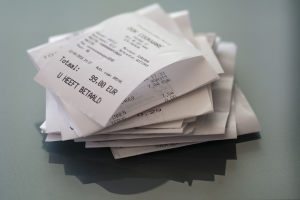How green is E-commerce?
The perception that online shopping does less damage to the environment than people who drive their vehicles to physical outlet stores is plausible. According to studies, delivery trucks exert less energy and generate less CO2 emissions compared to traditional retail. Delivery trucks can also deliver several packages in one single route as opposed to each household driving separately to the store. Many corporations including United Parcel Service Inc have invested heavily in resources in a bid to reduce their carbon footprint. Last year, United Parcel Service Inc announced its plans to purchase 6,000 natural gas-powered trucks over three years and increase purchases of renewable natural gas as part of its $450 million investment to lessen the environmental impact of its 123,000 vehicle fleet.
Despite this, e-retailers are still facing several challenges that affect global warming. We have compiled a list of useful tips that will help transform your business into a more sustainable one.
1. Switch to electrical receipts and abolish paper receipts

According to studies, 50% of receipts are printed on a unique thermal paper which carries chemicals called Bisphenol (BPA) and Bisphenol S (BPS). The EU has classified these endocrine disruptors as toxic to people and the environment. These chemicals have been proven to increase the risk of cancer and infertility. Therefore, till receipts shouldn’t be recycled as it lies the risk of contaminating other products.
Online purchases should only be accompanied by electronic receipts. If your business already sends order confirmations via emails to most of it’s of consumers, then that is great. Besides, you may also want to consider producing digital return slips so that consumers can easily print them off themselves and eliminate paper waste.
2. Reduce, reuse and recycle

One of the most devastating factors of e-commerce is the excessive amount of packaging that is involved. According to research, 72% of British consumers have said they think that retailers use too much packaging. For instance, we have all experienced receiving a small item in a modest sized box accompanied with a load of bubble wrap and mountains of foam peanuts, which is frustrating to say the least.
Most packaging contains recycled materials which end up in the landfills. So, it’s important that the size of the items match the boxes to ensure that less packaging is being used. Remember the old adage, “reduce, reuse, and recycle?” There’s a reason why reduce and reuse is listed first. If you’re struggling to reduce your packaging amount then perhaps you should try and think of a way that consumers can reuse the packaging before recycling it. Two thirds of consumers say they would have a better perception of companies that use less packaging material.
3. Incentivize customers to pick a slower delivery option

Next day delivery is a sales and marketing dream, a deal breaker for customers who can’t decide between you and your competitors. However, not many people are aware of the repercussions that come with it since it can have a negative impact on the environment.
According to research by the University of California they found that express delivery options not only wipe out the eco benefits of online shopping, but they actually create a higher carbon footprint compared with a customer driving to the store. The reason behind this is because companies are putting out half empty trucks on to the road which is massively reducing their energy efficiency. So, instead companies need to figure out a way of how they can incentive their customers for picking a slower delivery option which in turn will be more efficient and less damaging to the environment. .
4. Invest in your product descriptions to prevent returns

In-store shopping experience has something that E-commerce will never be able to compete with and that’s touch and feel. Therefore the inability to view the product influences the way consumers behave, as 19% of consumers have admitted to purchasing multiple versions with the intention on returning the ones that aren’t right. And, as a result not only does it mean more trucks on the road but it will also impact the environment and business itself. 57% of companies say returns have a negative impact on their daily operations.
So, what’s the solution? A good way to resolve this issue is to create detailed product pages which include high quality images/videos along with a clear and accurate product description such as materials, fabrics, sizing and care. Creating a detailed product page will enable your business to create confident customers and reduce both the rate and environmental impact of returns.
Take action
Shoppers are more conscious than ever of the ethical, environmental impact of goods and services which explains why fifty per cent of consumers in the US will avoid purchasing a product based on a company’s responsible reputation. Several organizations have taken action to eradicate the adverse effects that follow from its operations, and they have also adopted this strategy as a market tool. We hope that you have found these tips useful and that it will help transform your e-store into an eco-friendly business. As Mahatma Ghandi once said, be the change you wish to see in the world.
If you require help sourcing a warehouse overseas that is closer to your international consumers, then you might want to take a look at our warehouse service that we offer here, or give us a call on 0161 637 1080 to speak to one of our advisors. Alternatively, you can write us an email to enquiries@jpaccountant.com.
